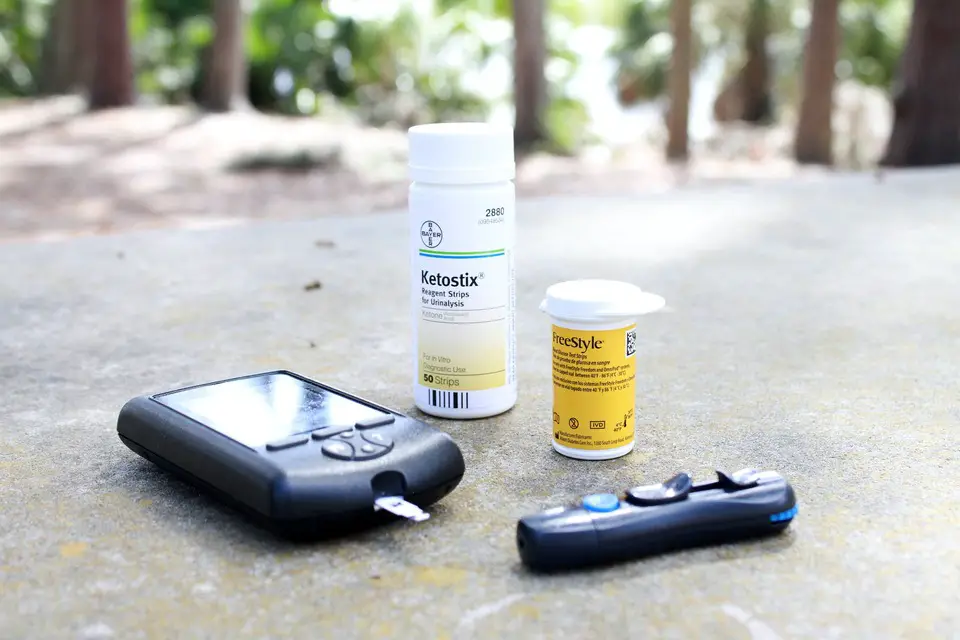Hiking with Type 1 Diabetes: Is It Possible?

If you’re living with Type 1 diabetes, there’s no reason to feel like you can’t enjoy a challenging hike. Managing blood sugar levels while hiking can be tricky, but with a little preparation, you can have a safe and fun outdoor adventure. Here are some tips on how to hike with diabetes.
Quick Links
Can Diabetics Go Hiking?
Yes! There’s no reason that people with diabetes can’t enjoy a hike. A recent study actually found that people with Type 1 diabetes substantially benefited from regular hiking. They concluded that hiking was not only beneficial but a safe activity for people with Type 1 diabetes.
But before you hit the trails, it’s important to do some planning. You’ll want to ensure that you have enough snacks and drinks to keep your blood sugar levels stable, as well as a plan for what to do if your blood sugar drops. It’s also important to let your hiking companions know that you have diabetes in case of an emergency.
How to Prepare for a Hike with Type 1 Diabetes
Everyone should go through a pre-hike checklist before heading out on the trails. If you have diabetes, there are a few additional things you’ll want to make sure of:
Check Your Blood Sugar Levels
It’s important to check your blood sugar levels before starting any hike, especially if you haven’t hiked in a while. If your blood sugar is low, you’ll want to have a snack before starting the hike. If it’s high, you may need to adjust your insulin levels.
Pack Plenty of Snacks and drinks
You’ll want to make sure that you have enough snacks and drinks to keep your blood sugar levels stable throughout the hike. It’s a good idea to pack more than you think you’ll need, just in case. Some examples of what to bring are: Gatorade mix, granola bars, cliff bars – essentially, carb-heavy snacks that will help to keep your blood sugar levels up.
Bring a Glucagon Kit
If your blood sugar levels drop while you’re on the hike, you’ll need to raise them quickly. A glucagon kit can be a lifesaver in this situation. Be sure to know how to use it before you go on the hike.
Tell Your Hiking Companions about Your Diabetes
In case of an emergency, it’s important that your hiking companions know that you have diabetes and the signs to look out for.
Check Your Insulin Pump
If you use an insulin pump, be sure to check that it’s working properly before starting the hike. You may also want to bring extra batteries, just in case.
Wear Sunscreen
People with diabetes are more susceptible to skin damage, so it’s important to wear sunscreen while hiking. Sunburn has been found to elevate blood glucose levels, so be sure to put on sunscreen before heading out.
Wear Sturdy/Broken In Hiking Shoes
You’ll be doing a lot of walking, so it’s important to wear comfortable shoes that won’t give you blisters. Untreated blisters for a diabetic can quickly turn into something more serious.
Bring A Fist Aid Kit
No matter how short your hike may be, it’s always a good idea to bring a first aid kit. As I mentioned above, diabetics are more susceptible to infection, so it’s best to be prepared.
How to Manage Blood Sugar Levels While Hiking
Once you’re on the trail, there are a few things you can do to manage your blood sugar levels:
Check Your Blood Sugar Levels Regularly
You should check your blood sugar levels every hour or so while hiking. If they start to drop, eat or drink something that will raise them quickly.
Take frequent breaks
If you feel your blood sugar levels dropping, take a break. It’s important to rest and raise your blood sugar levels before continuing on the hike.
Show Your Hiking Buddies How To Use Your Glucagon Kit
Just in case, you should show your hiking buddies how to use your glucagon kit. That way, they can help you if your blood sugar levels drop too low.
Stay Hydrated
Dehydration can cause blood sugar levels to spike, so it’s important to drink plenty of fluids while hiking. Water is the best option, but you can also drink sports drinks or juice if you need a quick sugar boost.
How Do You Keep Insulin Cool when Hiking?
Now that you know how to hike with diabetes, you may be wondering how to keep your insulin cool when hiking. There are a few different options:
Pack Your Insulin in a Cooler
One of the best ways to keep your insulin cool is to pack it in a cooler with ice packs. This will help keep it cold for several hours.
Wear an Insulin Pump
If you use an insulin pump, you can wear it on your body to keep it cool. Some people also find that wearing the pump helps them better manage their blood sugar levels.
Use a Cooling Case
There are special cases that you can use to keep your insulin cool when hiking. These cases use gel packs or ice to keep the insulin cool.
How Long Can Insulin Be out Of Fridge?
If you’ve already been using insulin, you may already know that it can actually be kept out of the fridge for up to 28 days, as long as it’s stored at cool/room temperatures. However, it’s always best to check with your healthcare provider before doing this.
However, if you plan on hiking in hot temperatures, it’s best to keep your insulin in a cooler with ice packs. This will help ensure that it doesn’t get too hot and become unusable.
Does Hiking Lower Blood Sugar?
Hiking can actually help lower blood sugar levels, as long as you don’t overdo it. Walking is a great way to get some exercise without putting too much strain on your body. If you have type 2 diabetes, regular exercise can help you manage your blood sugar levels and improve your overall health. However, if you have type 1 diabetes, you’ll need to be careful not to let your blood sugar levels drop too low.
If you’re planning on hiking, be sure to check your blood sugar levels before and during the hike. If they start to drop, take a break and eat or drink something that will raise them quickly. The recommendation really is to bring a ton of snacks and then some, just in case your blood sugar starts to drop.
Conclusion
In conclusion, hiking can be a great way to get some exercise and fresh air, but it’s important to take some extra steps to manage your diabetes. Be sure to wear comfortable shoes, bring a first aid kit, and check your blood sugar levels regularly. And if you use insulin, be sure to pack it in a cooler with ice packs. With some extra preparation, you can safely enjoy hiking with diabetes!






